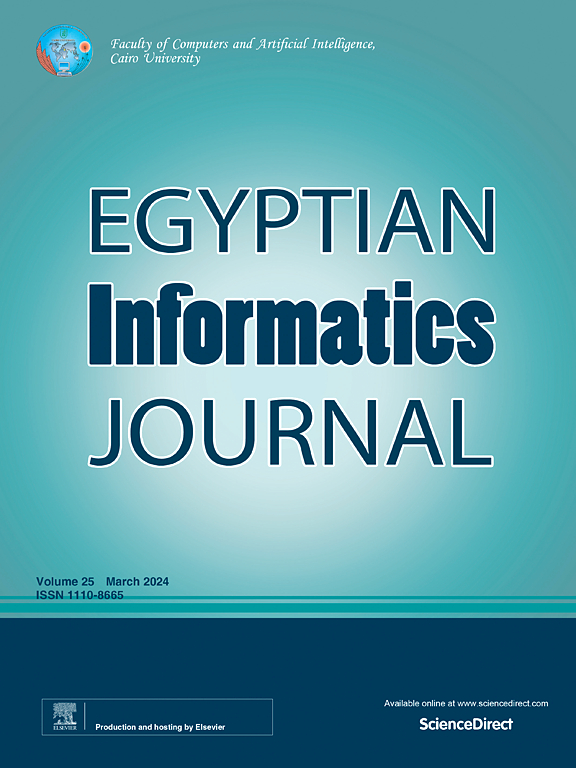HD-MVCNN:利用多视角卷积神经网络进行基于高密度心电信号的糖尿病预测和分类
IF 5
3区 计算机科学
Q1 COMPUTER SCIENCE, ARTIFICIAL INTELLIGENCE
引用次数: 0
摘要
糖尿病又称糖尿,是一种以高血糖为特征的病症,影响着全球众多人口。治疗糖尿病是不可行的。糖尿病是可以控制的。因此,及时确诊糖尿病至关重要。这项研究探讨了糖尿病对心脏的影响,重点是心率变异性(HRV)信号,它可以通过评估与糖尿病相关的心脏问题,提供有关糖尿病存在和严重程度的宝贵信息。从不规则和非线性心率变异信号中提取关键数据是一项相当具有挑战性的工作。研究心脏诊断需要对心电图(ECG)信号进行全面分析。传统的心电图记录使用十二个通道,每个通道捕捉来自心脏不同区域的复杂活动组合。检查体表记录的心电信号可能不是研究和诊断糖尿病问题的有效方法。本研究提出了一项研究建议,利用至少有 64 个通道的高密度分辨率心电图(ECG)系统和多视图卷积神经网络分类(HD-MVCNN)来应对上述挑战。该框架可帮助识别低血糖对大脑区域的影响,从而降低头皮心电图程序的复杂性并增加θ和δ功率。卷积架构模型主要通过其随机梯度下降(SGD)和卷积层来增强和优化,根据结果,与传统分类模型相比,HD-MVCNN 表现出更好的稳定性和准确性。因此,HD-MVCNN有望成为一种对糖尿病临床数据特征进行分类的强大方法。本文章由计算机程序翻译,如有差异,请以英文原文为准。
HD-MVCNN: High-density ECG signal based diabetic prediction and classification using multi-view convolutional neural network
Diabetes mellitus, also known as diabetes, is a medical condition marked by high blood sugar levels and impacts a large population worldwide. Treating diabetes is not feasible. It can be managed. Hence, it is crucial to promptly identify a diagnosis of diabetes. This study explores the effects of diabetes on the heart, focusing on heart rate variability (HRV) signals, which can offer valuable information about the existence and seriousness of diabetes through the evaluation of diabetes-related heart problems. Extracting crucial data from the irregular and nonlinear HRV signal can be quite challenging. Studying cardiac diagnostics involves a thorough analysis of electrocardiogram (ECG) signals. Traditional electrocardiogram recordings utilize twelve channels, each capturing a complex combination of activities originating from different regions of the heart. Examining ECG signals recorded on the body’s surface may not be an effective method for studying and diagnosing diabetic issues. The study introduces a research proposal utilizing a high-density resolution electrocardiogram (ECG) system with a minimum of 64 channels and multi-view convolutional neural network classification (HD-MVCNN) to address the mentioned challenges. This framework may help identify the hypoglycaemia effects on brain regions, leading to decreased complexity and increased theta and delta power during scalp electrocardiogram procedures. The convolutional architectural model primarily contributes to enhancement and optimization through its Stochastic Gradient Descent (SGD) along with convolutional layers and according to results, the HD-MVCNN demonstrated better stability and accuracy in comparison to traditional classification models. Thus, HD-MVCNN shows promise as a powerful method for classifying features in diabetes clinical data.
求助全文
通过发布文献求助,成功后即可免费获取论文全文。
去求助
来源期刊

Egyptian Informatics Journal
Decision Sciences-Management Science and Operations Research
CiteScore
11.10
自引率
1.90%
发文量
59
审稿时长
110 days
期刊介绍:
The Egyptian Informatics Journal is published by the Faculty of Computers and Artificial Intelligence, Cairo University. This Journal provides a forum for the state-of-the-art research and development in the fields of computing, including computer sciences, information technologies, information systems, operations research and decision support. Innovative and not-previously-published work in subjects covered by the Journal is encouraged to be submitted, whether from academic, research or commercial sources.
 求助内容:
求助内容: 应助结果提醒方式:
应助结果提醒方式:


